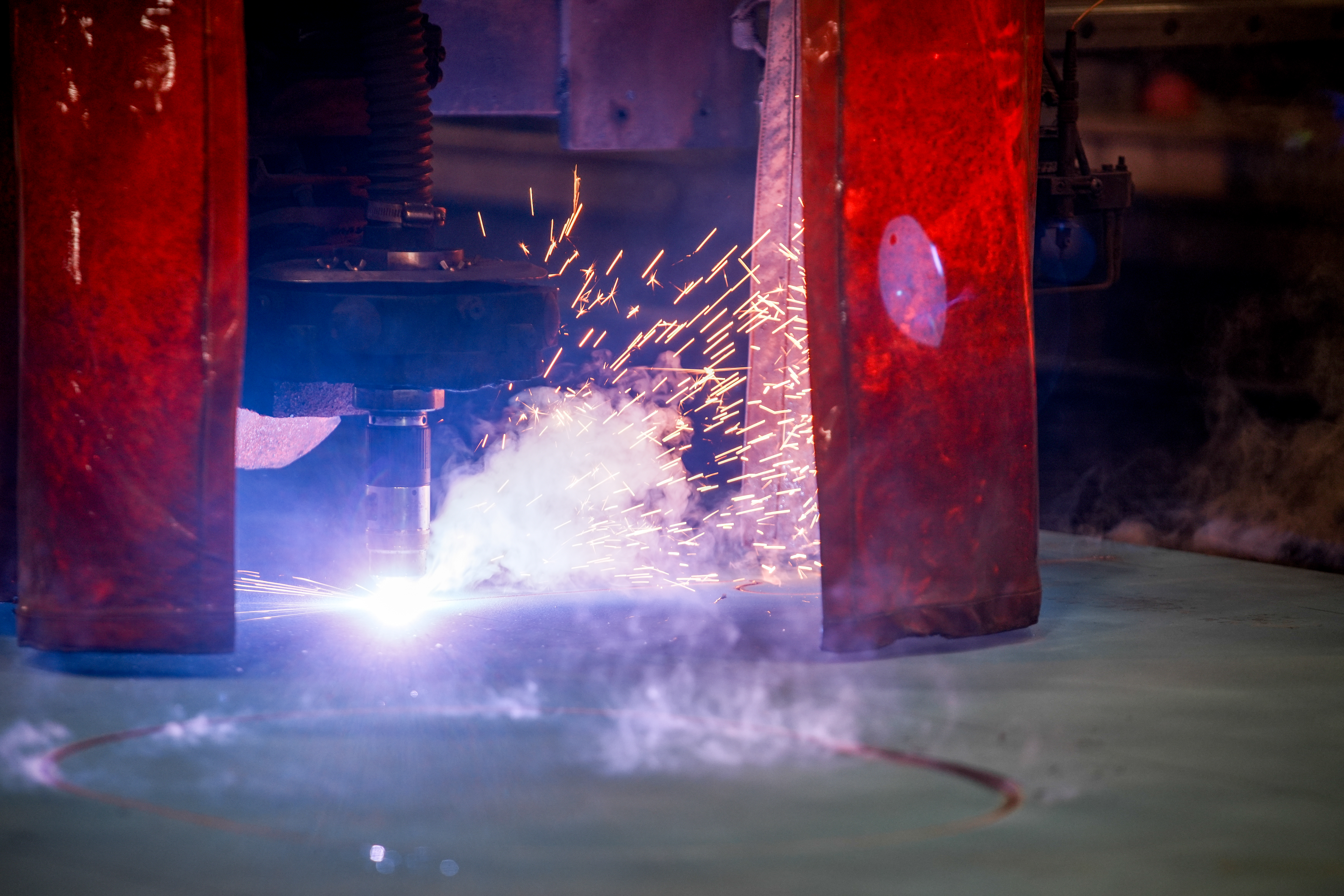Philly Shipyard Begins Construction on First of Three Matson Aloha Class LNG-Fueled Containerships
Philly Shipyard (PSI) has begun construction on the first of three Aloha Class LNG-fueled containerships for Matson Navigation Company. The contract, signed in 2022, is valued at approximately USD 1 billion, with deliveries expected in 2026 and 2027. These 854-foot vessels will be capable of carrying 3,600 TEU and operating at speeds exceeding 23 knots.
The ships can run on conventional marine fuels or LNG, incorporating 'green ship technology' to support Matson's 2030 greenhouse gas emissions reduction goal. This project marks PSI's third collaboration with Matson, following previous deliveries between 2003-2006 and 2018-2019. The new vessels will enhance Matson's Hawaii service and CLX operations.
Philly Shipyard (PSI) ha iniziato la costruzione del primo di tre portarinfusi Aloha Class alimentati a LNG per la Matson Navigation Company. Il contratto, firmato nel 2022, ha un valore di circa 1 miliardo di USD, con consegne previste per il 2026 e 2027. Questi vascelli di 854 piedi saranno in grado di trasportare 3.600 TEU e operare a velocità superiori a 23 nodi.
Le navi possono utilizzare combustibili marini convenzionali o LNG, integrando la 'tecnologia navale ecologica' per supportare l'obiettivo di riduzione delle emissioni di gas serra del 2030 di Matson. Questo progetto segna la terza collaborazione di PSI con Matson, dopo le precedenti consegne avvenute tra il 2003-2006 e il 2018-2019. I nuovi vascelli miglioreranno il servizio di Matson nelle Hawaii e le operazioni CLX.
Philly Shipyard (PSI) ha comenzado la construcción del primero de tres buques portacontenedores de la clase Aloha impulsados por LNG para Matson Navigation Company. El contrato, firmado en 2022, tiene un valor de aproximadamente 1 mil millones de USD, con entregas programadas para 2026 y 2027. Estos barcos de 854 pies podrán transportar 3,600 TEU y operar a velocidades superiores a 23 nudos.
Los buques pueden funcionar con combustibles marinos convencionales o LNG, incorporando la 'tecnología naval verde' para apoyar el objetivo de reducción de emisiones de gases de efecto invernadero del 2030 de Matson. Este proyecto marca la tercera colaboración de PSI con Matson, tras las entregas anteriores entre 2003-2006 y 2018-2019. Los nuevos barcos mejorarán el servicio de Matson en Hawaii y las operaciones CLX.
필리쉽야드(PSI)는 마트손 내비게이션 회사에 대한 세 척의 알로하 클래스 LNG 연료화물선 중 첫 번째 건설을 시작했습니다. 2022년에 체결된 계약은 약 10억 달러의 가치를 가지며, 2026년과 2027년에 인도가 예정되어 있습니다. 이 854피트 선박은 3,600 TEU를 운반할 수 있으며 23 노트 이상의 속도로 작동할 수 있습니다.
이 선박은 기존의 해양 연료 또는 LNG로 운항할 수 있으며, 마트손의 2030년 온실가스 배출량 감축 목표를 지원하기 위해 '친환경 선박 기술'을 도입했습니다. 이 프로젝트는 PSI와 마트손의 세 번째 협업으로 2003-2006년 및 2018-2019년 간의 이전 납품에 이은 것입니다. 새로운 선박은 마트손의 하와이 서비스 및 CLX 운영을 향상시킬 것입니다.
Philly Shipyard (PSI) a commencé la construction du premier de trois porte-conteneurs de la classe Aloha alimentés au GNL pour la Matson Navigation Company. Le contrat, signé en 2022, est évalué à environ 1 milliard USD, avec des livraisons prévues en 2026 et 2027. Ces navires de 854 pieds pourront transporter 3 600 EVP et fonctionner à des vitesses dépassant 23 nœuds.
Les navires peuvent fonctionner avec des combustibles marins conventionnels ou du GNL, intégrant une 'technologie de navire écologique' pour soutenir l'objectif de réduction des émissions de gaz à effet de serre d'ici 2030 de Matson. Ce projet marque la troisième collaboration de PSI avec Matson, après des livraisons précédentes entre 2003-2006 et 2018-2019. Les nouveaux navires amélioreront le service de Matson à Hawaii et les opérations CLX.
Philly Shipyard (PSI) hat mit dem Bau des ersten von drei LNG-betriebenen Aloha-Klasse-Containerschiffen für die Matson Navigation Company begonnen. Der 2022 unterzeichnete Vertrag hat einen Wert von rund 1 Milliarde USD und die Auslieferungen sind für 2026 und 2027 geplant. Diese 854 Fuß langen Schiffe werden in der Lage sein, 3.600 TEU zu transportieren und Geschwindigkeiten von über 23 Knoten zu erreichen.
Die Schiffe können mit herkömmlichen Marinekraftstoffen oder LNG betrieben werden und integrieren 'grüne Schiffstechnologie', um die Reduktionsziele für Treibhausgasemissionen bis 2030 von Matson zu unterstützen. Dieses Projekt markiert die dritte Zusammenarbeit zwischen PSI und Matson, nach früheren Lieferungen zwischen 2003-2006 und 2018-2019. Die neuen Schiffe werden den Hawaii-Service und die CLX-Operationen von Matson verbessern.
- Contract valued at approximately USD 1 billion
- Vessels support Matson's 2030 greenhouse gas emissions reduction goal
- Ships capable of operating at speeds over 23 knots
- Dual-fuel capability: conventional marine fuels or LNG
- 3,600 TEU capacity enhancing Matson's service capabilities
- None.
The first vessel is expected for delivery in 2026
PHILADELPHIA, PA / ACCESSWIRE / September 30, 2024 / Philly Shipyard, Inc. (PSI), the sole operating subsidiary of Philly Shipyard ASA (Oslo:PHLY), today began construction on the first of three Aloha Class LNG-fueled containerships to be built for Matson Navigation Company, Inc. (Matson). Also referred to as a "steel cutting" ceremony, the event memorializes the beginning of a ship's life as the first cut is made on the first plate on the shipyard's state-of-the-art plasma cutter. Representatives from Philly Shipyard and Matson gathered for short remarks before Regis Burkhardt, Matson Site Team Manager, pushed the button to officially begin production.

"Today we celebrate not only the beginning of production, but also the return of Matson to Philly Shipyard for our third project together," said Steinar Nerbovik, Philly Shipyard's President and CEO. "We are thrilled to build these next vessels which are expected to help Matson achieve its 2030 greenhouse gas emissions goal, an initiative well-aligned with our commitment to people and planet."
The contract for the vessels was originally signed in 2022 with an approximate valuation of USD 1 billon, and with deliveries expected in 2026 and 2027. PSI previously partnered with Matson delivering four containerships between 2003 and 2006 and two more containerships, also known as the Aloha Class, in 2018 and 2019.
Measuring 854 feet (260 meters) long, the three new Aloha Class vessels will match the length of the two existing Aloha Class ships, currently the largest Jones Act containerships ever constructed. The 3,600 TEU vessels are capable of carrying a variety of container sizes and operating at speeds in excess of 23 knots. The vessels will operate on either conventional marine fuels or liquefied natural gas (LNG) and will incorporate other "green ship technology", supporting Matson's goal to reduce greenhouse gas emissions.
"Our existing Aloha Class ships are among the fastest, most efficient vessels in the Matson fleet," said Matt Cox, Matson's Chairman and Chief Executive Officer. "And like their sisterships, these three new vessels will help Matson achieve its 2030 greenhouse gas emissions reduction goal while also providing additional capacity and speed benefitting our Hawaii service as well as the CLX."
The contract award, at time of signing, further bolstered Philly Shipyard's order backlog to nine vessels. This backlog now consists of seven vessels, including three National Security Multi-Mission Vessels (NSMVs) for TOTE Services LLC. The first two NSMVs have been delivered, with NSMV II as recently as last week. Additionally, one Subsea Rock Installation Vessel (SRIV) for Great Lakes Dredge & Dock Company, LLC is under construction.
###
About Philly Shipyard
Philly Shipyard, Inc. (PSI) is a leading U.S. shipbuilder that is presently pursuing a mix of commercial and government work. It possesses a state-of-the-art shipbuilding facility and has earned a reputation as a preferred provider of oceangoing merchant vessels with a track record of delivering quality ships, having delivered around
For more information about Philly Shipyard, please visit www.phillyshipyard.com.
Contact:
Qurana Moody
+1 215 875 8863
Qurana.Moody@phillyshipyard.com
SOURCE: Philly Shipyard ASA
View the original press release on accesswire.com







